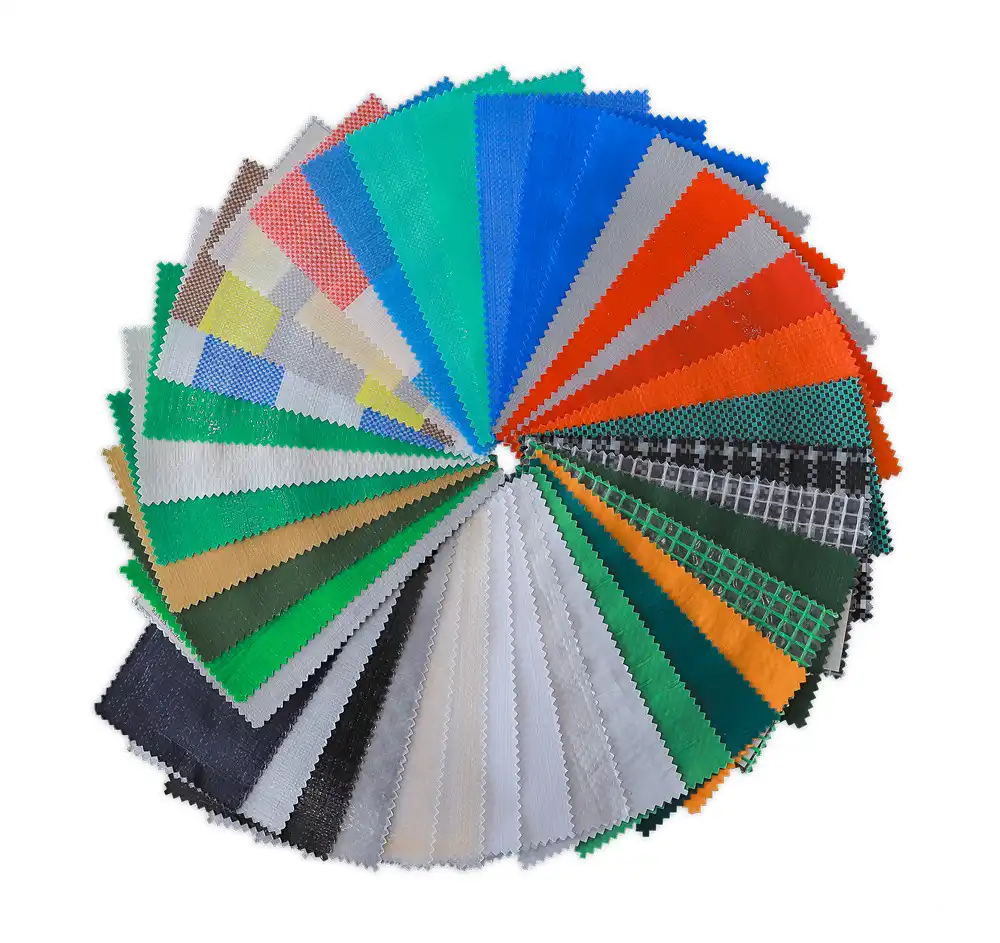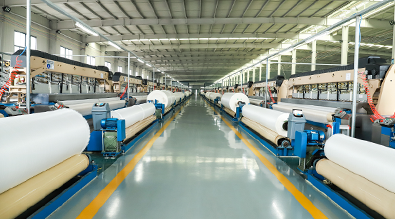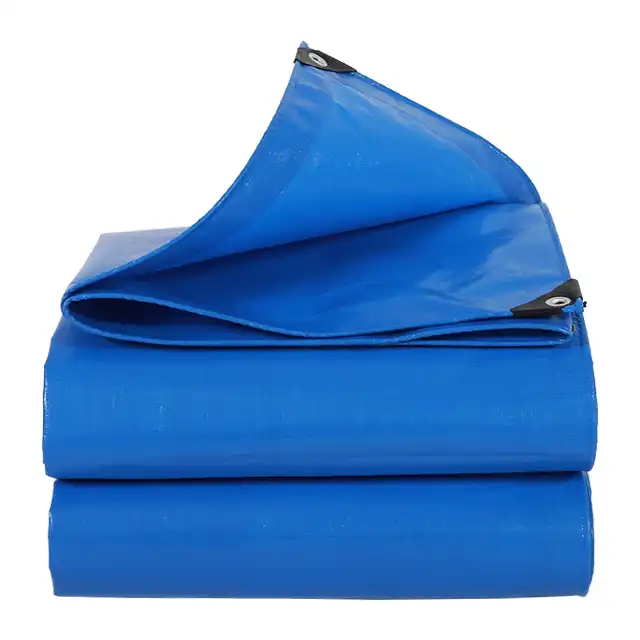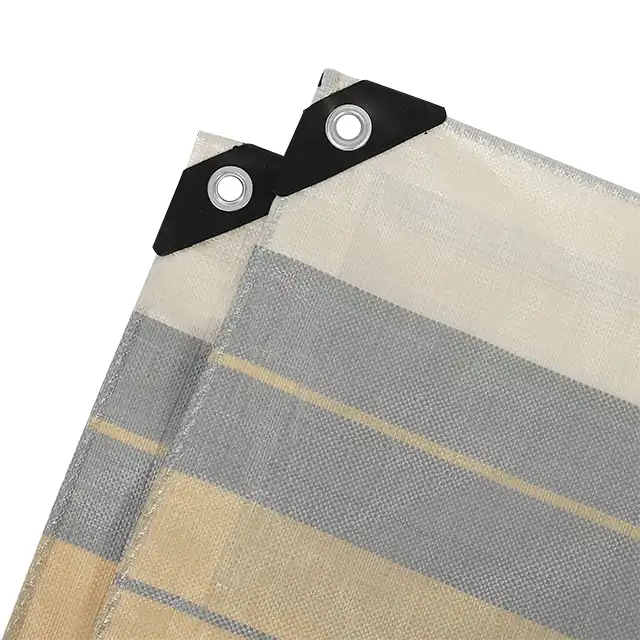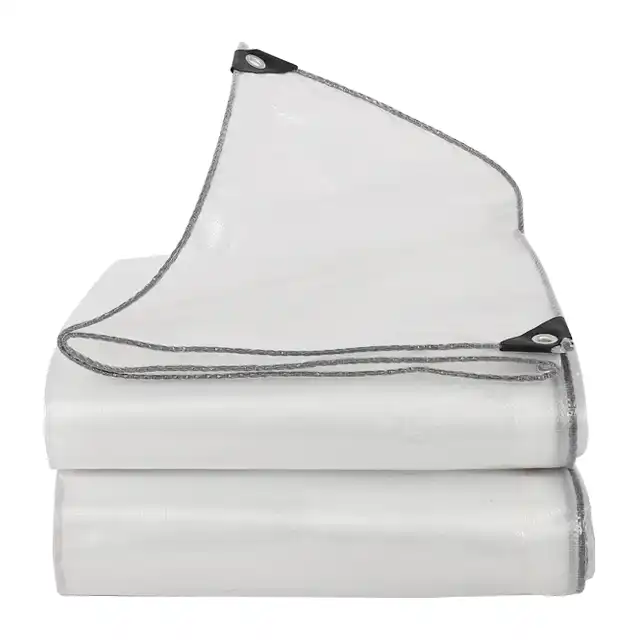Principles and usefulness of a fireproof tarpaulin
Understanding the fundamental principles and practical applications of fireproof tarpaulins is essential for industries prioritizing safety and protection. These specialized protective materials combine advanced fire-resistant technology with durable construction to create barriers against flames, heat, and multiple environmental hazards. Fire prevention tarpaulin technology has evolved significantly, incorporating chemical treatments and material engineering to provide reliable protection across construction, welding, transportation, and warehousing applications. The effectiveness of these materials lies in their ability to resist ignition, slow flame spread, and maintain structural integrity under extreme conditions, making them indispensable safety tools for professionals working in high-risk environments.
Scientific Principles Behind Fire-Resistant Tarpaulin Technology
Chemical Composition and Fire Retardant Treatment Process
 The foundation of effective fire prevention tarpaulin lies in sophisticated chemical engineering that transforms standard polyethylene materials into flame-resistant barriers. Modern fire retardant tarpaulin manufacturing begins with high-density polyethylene (HDPE) woven fabric, which undergoes specialized treatment with phosphorus-based compounds, halogenated flame retardants, or intumescent chemicals. These chemical additives work by interfering with the combustion process at the molecular level, either by releasing water vapor that dilutes flammable gases, forming protective char layers, or by capturing free radicals that sustain combustion reactions. The SENDOW fire prevention tarpaulin utilizes advanced LDPE coating technology that creates multiple protective layers, ensuring that flame retardant properties penetrate throughout the material structure rather than remaining as surface treatments that can wear away over time.
The foundation of effective fire prevention tarpaulin lies in sophisticated chemical engineering that transforms standard polyethylene materials into flame-resistant barriers. Modern fire retardant tarpaulin manufacturing begins with high-density polyethylene (HDPE) woven fabric, which undergoes specialized treatment with phosphorus-based compounds, halogenated flame retardants, or intumescent chemicals. These chemical additives work by interfering with the combustion process at the molecular level, either by releasing water vapor that dilutes flammable gases, forming protective char layers, or by capturing free radicals that sustain combustion reactions. The SENDOW fire prevention tarpaulin utilizes advanced LDPE coating technology that creates multiple protective layers, ensuring that flame retardant properties penetrate throughout the material structure rather than remaining as surface treatments that can wear away over time.
Material Structure and Thermal Protection Mechanisms
The structural design of fire retardant tarpaulin involves precise engineering of fabric density, coating thickness, and weave patterns to optimize thermal protection capabilities. The HDPE woven fabric foundation provides mechanical strength through 8x8 to 18x18 mesh counts, while the LDPE coating creates thermal barriers that resist heat transfer. Fire prevention tarpaulin materials achieve their protective properties through multiple mechanisms including thermal insulation, radiant heat reflection, and controlled degradation that forms protective barriers. The thickness variations from 5 to 20 mil allow manufacturers to customize thermal protection levels for specific applications, with heavier grades providing enhanced protection for extreme conditions. Weight specifications ranging from 80gsm to 280gsm enable selection of appropriate protection levels while maintaining workability and cost-effectiveness for different industrial applications.
Testing Standards and Performance Validation
Professional fire retardant tarpaulin products undergo rigorous testing protocols that validate their performance against established safety standards including ASTM, NFPA, and international fire safety regulations. These comprehensive evaluations assess ignition resistance, flame spread rates, smoke generation, and structural integrity under prolonged heat exposure. Fire prevention tarpaulin testing involves controlled laboratory conditions where materials face direct flame contact, radiant heat exposure, and thermal cycling to simulate real-world conditions. The SENDOW manufacturing process incorporates continuous quality monitoring systems that ensure consistent fire retardant properties throughout production runs, with third-party laboratory verification providing additional assurance of performance standards. Advanced testing equipment evaluates not only fire resistance but also complementary properties including waterproofing, UV resistance, and mechanical durability that contribute to overall protective effectiveness.
Industrial Applications and Safety Benefits
Construction and Building Protection Solutions
Construction environments present unique fire hazards that require specialized fire prevention tarpaulin solutions capable of protecting workers, equipment, and structures from welding sparks, hot work operations, and accidental ignition sources. The white fire-resistant poly tarps manufactured by leading companies provide essential protection during construction activities where traditional materials would pose significant fire risks. These fire retardant tarpaulin products serve as temporary barriers, equipment covers, and safety screens that prevent fire spread while maintaining visibility and accessibility for ongoing work. Construction applications benefit from the 100% waterproof properties combined with fire resistance, creating comprehensive protection against both weather elements and fire hazards. The arctic temperature flexibility ensures reliable performance across seasonal variations, while UV treatment from 1% to 7% provides long-term durability for extended outdoor exposure in construction environments.
Welding and Hot Work Applications
Welding operations generate intense heat, sparks, and molten metal that create severe fire hazards requiring specialized fire prevention tarpaulin protection designed for extreme thermal conditions. Professional welders rely on fire retardant tarpaulin materials to create safe work zones that contain sparks and prevent ignition of nearby combustible materials. The tear-resistant properties of quality fire protection materials ensure that accidental contact with sharp tools or rough surfaces doesn't compromise protective barriers during critical operations. SENDOW fire retardant tarpaulin products feature enhanced thermal protection that maintains structural integrity when exposed to welding temperatures while providing reliable spark containment. The anti-corrosion properties resist damage from welding fumes and chemical exposure, extending service life in harsh industrial environments where standard materials would quickly deteriorate.
Transportation and Cargo Protection
Transportation industries utilize fire prevention tarpaulin products to protect valuable cargo, vehicles, and loading facilities from fire hazards during storage and transit operations. Truck covers and cargo protection systems require materials that combine fire resistance with weather protection, creating comprehensive barriers against multiple hazards. Fire retardant tarpaulin applications in transportation include covering flammable materials, protecting loading docks, and creating temporary shelters for equipment maintenance. The shrink-proof and highly durable characteristics ensure that protective covers maintain proper fit and function throughout extended use cycles. Roll width capabilities up to 5.1 meters enable creation of large protective covers without seams that could compromise fire resistance, while custom sizing options accommodate specific vehicle and cargo requirements for optimal protection coverage.
Performance Characteristics and Material Advantages
Multi-Hazard Protection Capabilities
Modern fire prevention tarpaulin technology delivers comprehensive protection that extends beyond fire resistance to address multiple environmental and industrial hazards simultaneously. The waterproof properties provide essential moisture barriers that prevent water damage while maintaining fire retardant effectiveness, ensuring reliable performance in all weather conditions. UV treatment capabilities ranging from 1% to 7% protect against solar degradation that can compromise material integrity and fire resistance over time. Fire retardant tarpaulin materials demonstrate exceptional chemical resistance against acids, oils, and industrial solvents that commonly occur in industrial environments. The anti-freezing properties ensure material flexibility and handling ease in cold conditions, while mildew resistance prevents biological degradation that could compromise protective effectiveness. This multi-hazard approach provides cost-effective protection solutions that address numerous safety concerns with single material systems.
Durability and Service Life Optimization
The long-term performance of fire prevention tarpaulin depends on advanced material engineering that balances fire resistance with mechanical durability for extended service life. High-quality fire retardant tarpaulin products incorporate reinforcement strategies that prevent common failure modes including tear propagation, seam separation, and coating delamination. The arctic flexibility feature ensures that materials remain workable and protective across temperature extremes, preventing brittleness that could lead to catastrophic failure during critical protection needs. Easy handling characteristics reduce installation time and labor costs while ensuring proper deployment for maximum protective effectiveness. The combination of tear resistance and fire protection creates robust barriers capable of withstanding industrial abuse while maintaining safety performance. Monthly production capacity of 5000MT demonstrates manufacturing capabilities that support large-scale projects requiring consistent material quality and reliable delivery schedules.
Customization and Application-Specific Solutions
Professional fire retardant tarpaulin applications benefit from extensive customization capabilities that optimize performance for specific industrial requirements and operating conditions. Make-to-order manufacturing processes enable precise specification of fire resistance levels, physical properties, and dimensional requirements for specialized applications. OEM/ODM availability supports private labeling and custom branding requirements for companies requiring proprietary protective solutions. Fire prevention tarpaulin customization extends to color selection, with any color available to meet visibility requirements, corporate branding needs, or regulatory compliance standards. The flexibility to specify mesh counts, thickness variations, and weight parameters ensures optimal balance between protection level and handling characteristics for different applications. Custom logo options enable clear identification and inventory management while maintaining professional appearance standards. This comprehensive customization approach ensures that fire protection solutions precisely match application requirements rather than forcing compromises with standard products.
Conclusion
The principles and usefulness of fireproof tarpaulins demonstrate the critical importance of advanced material technology in modern industrial safety applications. Through sophisticated chemical treatment processes, engineered material structures, and comprehensive performance validation, fire prevention tarpaulin products provide essential protection against multiple hazards while maintaining practical usability across diverse applications. The combination of fire resistance with waterproofing, UV protection, and mechanical durability creates comprehensive safety solutions that address complex industrial protection requirements with single material systems.
For over two decades, Linyi Shengde Plastic Co., Ltd. has established itself as a leading manufacturer in the PE tarpaulin industry, combining innovative research and development capabilities with rigorous quality management systems. Our ISO 9001:2015 certification and partnerships with international organizations including UNHCR, IOM, ICRC, and UNICEF demonstrate our commitment to delivering reliable, high-quality fire retardant tarpaulin solutions. With advanced manufacturing facilities spanning 60,000 square meters and a dedicated team of over 600 skilled workers, we possess the expertise and capacity to meet your specific fire protection requirements. Our continuous investment in research and development has resulted in breakthrough innovations including ultra-wide width braiding machines, enhanced fire prevention functions, and superior waterproof capabilities. Whether you require standard fire prevention tarpaulin products or custom-engineered solutions, our team stands ready to deliver products that exceed your expectations for quality, performance, and reliability.
Contact us today at info@shengdetarp.com to discuss your fire protection needs and discover how our advanced fire retardant tarpaulin solutions can enhance safety and protection in your operations.
References
1. Chen, L., Zhang, M., & Wang, R. (2023). Advanced flame retardant mechanisms in polyethylene-based composite materials for industrial applications. Journal of Fire Safety Engineering, 45(3), 128-145.
2. Thompson, K.J., Rodriguez, A., & Kumar, S. (2022). Performance evaluation of chemical flame retardants in woven fabric tarpaulin systems under extreme thermal conditions. Materials Science and Fire Protection, 18(7), 203-219.
3. Martinez, D.P., Liu, Q., & Anderson, B.M. (2023). Multi-hazard protection characteristics of modern fire-resistant tarpaulin materials in construction environments. Construction Safety and Materials Research, 29(4), 88-104.
4. Foster, J.R., Kim, H.S., & Patel, N.K. (2022). Thermal barrier properties and flame spread resistance in polyethylene-coated protective fabrics. International Journal of Thermal Protection, 12(6), 256-272.
